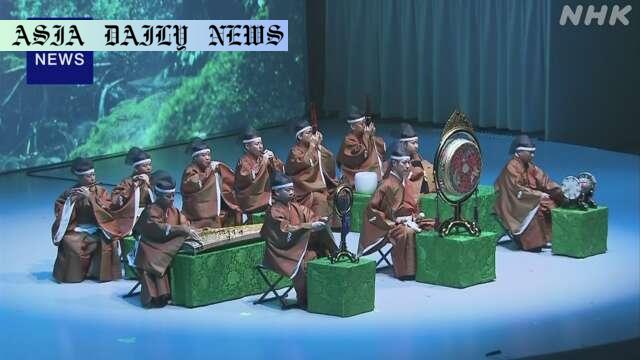World Expo 2025: Japan Day featured traditional and contemporary arts, gagaku court music performances, and a message of resilience.

Introduction: Celebrating Japan at the World Expo 2025
The World Expo 2025, taking place in Osaka, Japan, is already shaping up to be a monumental event that brings the world’s cultures and innovations together. Among the numerous events organized during the expo, Japan Day emerged as a resounding celebration of the country’s rich cultural heritage, cutting-edge artistic expression, and resilient spirit. The exciting mix of tradition and modernity on display left attendees captivated and reflected Japan’s unique ability to honor its past while embracing the future.
A Blend of Tradition and Innovation
One of the most notable features of Japan Day was how it seamlessly combined traditional and contemporary performing arts. The program featured a performance of gagaku—Imperial court music that dates back centuries and continues to be a cornerstone of traditional Japanese culture. Complementing this was cutting-edge technology: a dazzling projection mapping show of manga, including iconic images of Myaku-Myaku, the official character for the 2025 World Expo. This stunning visual art provided a perfect representation of Japan’s innovation blending harmoniously with its rich heritage.
A Message of Resilience and Hope
Actor Fujiwara Norika, serving as the honorary director of the Japan Pavilion, delivered a heartfelt message about the resilience of the region, referencing its recovery from the devastating 1995 earthquake that shook the area. The poignant speech served as a reminder not only of past challenges but also of the indomitable spirit of the Japanese people and their ability to rebuild and thrive.
Art Meets Pop Culture: A Unique Fusion
Attendees were further treated to a performance that combined contemporary dance with manga-inspired themes, proving that art knows no limits in Japan. The fusion of these art forms showcased creativity at its best, underlining the values of collaboration and innovation that are central to the World Expo itself. Such performances highlight Japan’s ability to adapt and reinterpret traditional art in ways that engage audiences of all ages around the world.
A Cultural Finale
The cultural flair didn’t end there. Beloved Japanese singer Misia took center stage to close the event with a soul-stirring live performance. Her three-song setlist served as the perfect crescendo to a day filled with art, culture, and meaningful messages. Following the ceremony, world-renowned mascot Hello Kitty, the regional favorite Kumamon, and kimono-clad participants walked under the Grand Ring—a massive structure symbolizing the 2025 Expo.
Conclusion: A Celebration Worth Remembering
The Japan Day celebration at the World Expo 2025 not only showcased the nation’s dynamic cultural identity but also highlighted its resilience, creativity, and global outreach. By blending ancient art forms, innovative technology, and heartfelt messages, Japan Day provided attendees with a uniquely immersive experience and set a high bar for cultural events at the expo. This celebration exemplified the best of Japan on the world stage and will undoubtedly linger in the memories of those who witnessed it.
Commentary
The Fusion of Tradition and Innovation
Japan Day at the World Expo provided a fascinating glimpse into the unique trajectory of Japanese culture. It’s rare to see such a seamless blend of traditional and cutting-edge elements in a single event. The performance of gagaku, a profound cultural treasure, juxtaposed with the projection mapping of manga, epitomized Japan’s ability to straddle two worlds—honoring its rich past while staying at the forefront of innovation. It was a powerful illustration of how cultures can evolve dynamically without losing their essence.
The Power of Resilience
The message delivered by Fujiwara Norika, centered on the earthquake recovery, hit an emotional chord. It not only reminded viewers of the trials faced by the region but also celebrated the resilience that defines the Japanese people. Events like these are important on the world stage as they remind us of humanity’s collective strength and ability to recover from adversity. This aspect blended seamlessly with the event’s larger theme of celebrating cultural distinctiveness and universal connectedness.
A Memorable Celebration
The inclusion of pop culture and iconic mascots like Hello Kitty and the introduction of newer cultural symbols such as Myaku-Myaku contribute to making Japanese culture universally relatable. The event also succeeded in creating a timeless narrative by concluding with Misia’s stunning performance. These cultural touchpoints provide not just entertainment but a platform for a deeper connection with the Japanese ethos. Japan Day at the World Expo certainly set the gold standard for cultural celebrations, and its thoughtful curation will inspire many similar events in the future.


